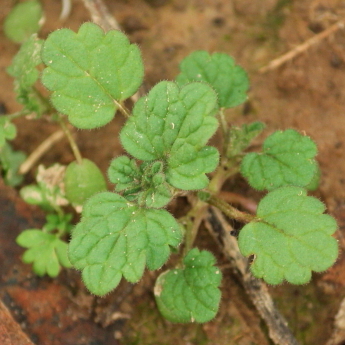Christmas Eve...it sure doesn't feel like it. Temperature outside is about 68 degrees right now, and it's sunny and windy. But the warm weather has given me a chance to work on a few projects that I needed to get wrapped up.
Project #1 - Fix the roof on Zelda Scissorhands' house.
Zelda's "house" started out years ago as my recycling bin. It was made out of treated plywood, with the intention that it would sit outside, giving me a place to put my recycling until I could haul it to the recycling center. The initial build had a single lift-up top that I, in my brilliance, decided to cover with some asphalt shingles. I happily shingled the entire thing. But when I tried to lift the top to put in my first bag of tin and plastic, I shocked and dismayed when I discovered that I could NOT lift the roof! (I should have know that, since I couldn't pick up a bundle of shingles either!) So off the shingles came, and the roof was cut into two sections. I put the shingles back on, and although it was tough, I was able to lift the half-roofs.
But I had not counted on mice. In just a matter of days, they had discovered the bin, and yee-haw!!! All kinds of plastic things to chew on! What a disaster. The bin was full of plastic shards, the bags had holes in them, and everything had mouse poop in it. Sadly, I concluded that my brilliant recycling bin idea was just not going to work.
So I decided I would turn it into a house for the outside cats. I cut a hole in the front, and put some hay in it. I tried to entice them into their new house by putting their food dish in there. No good. They simply refused to live in it.
Since the recycling/cat box with a roof wasn't going to hold my recycling, and since the cats wouldn't use it for their house, it was just in the way where I had put it. RAF helped me move it out under the old pecan tree, and there it sat.
A year or so later, I decided to get some laying hens. The cat hole was covered up, a new larger hole was cut on the other side, and the recycling/cat box was converted into a little hen house. It actually worked pretty well for that. I took the shingles off, screwed down one of the roof sections, but left the other half so that I could lift it during the summer to let the breeze blow through. I fixed a wire screen to cover that half, and added a roost/nest box for them on that end. My two little Bantam chickens (Russell Crow, the rooster, and Dorothy the hen) along with the two Rhode Island Red hens, Rhodie and Louise, all seemed quite happy. It was so sweet to go out late in the evening to close their roof and see them all sleeping together on their roost.
Then came the terrible summer day when I got home from work and found Louise dead and Rhodie dying of heat stroke. I didn't realize they couldn't get enough airflow through their outside pen and by the time I figured out what was wrong, it was too late to save them. And it wasn't much longer until there was another terrible day, when the neighbor's dogs broke into the pen. By following the trail of feathers, it looked like Russell Crow put up a valiant fight. But little Dorothy was no where to be found. I supposed the dogs had gotten her too. A couple of days later when I started to clean the hay out of their nest, I found little Dorothy. She had been fatally wounded, and had taken shelter under her roost, and that's where she died. I guess that was a place where she felt safe.
Once again the box was empty.
Zelda Scissorhands had lived in our bathroom for about two years. I had put her in there to recuperate from yet another sinus infection. She never acted like she wanted out, always seeming content to curl up by the heater in the winter or just stretch out on the floor in the summer. She had a litter box, food, and water, so what more could a cat ask for? She's just weird.
But in fall 2019, for whatever reason, she decided she was done with being a house cat. I had opened the bathroom window for her one day and she jumped out, and refused to come back in the house again. As the weather got colder, I was worried about her, so decided to see if she would sleep in the old recycling/cat/chicken box. I put fresh straw on the chicken roost, lifted the lid and set her gently down on the straw. She made it back to the carport before I even got around the building. Try again. Same result. But after a few cold nights, she did decide to sleep in there, and now it's her house.
So finally the point of the story. The house needed a new roof to keep it from leaking water in at the middle. I had just put a board over the center seam, and it kept most of the rain out, but the center part of the box still got wet if it rained very hard. RAF helped me cut some old tin we had saved from his roll-off roof observatory, and I think it will work out quite well. My confession...on the first attempt, I put the tin on horizontally. Dumb mistake. The horizontal tin acted just like a funnel to direct water right into her house, and her basket and pillow were complete soaked at the first rain. So RAF helped me switch it around, and I think this time, it will keep her dry.
I couldn't find her today, but thought I'd put her dried out basket and pillow back in the house. I lifted the lid and there she was, just as snug as she could be on the bed of hay. I think it must have been 90 degrees in there, but she acted like she was really enjoying her warm bed.She comes out in the mornings to be fed, and usually sleeps somewhere out in the sun during the day. But she goes back to her house at night. I think the old recycling/cat/chicken/cat box is being put to good use, and I'm glad.
Project #2 - Repair the bluebird box.
Project #3 - Get the new blueberry bed ready
In the picture of Zelda's house above, notice the area at the base of the house where the grass has been cleaned out. That's where I plan to put the three blueberry bushes I've ordered from Nourse Farms. I'm not sure if the soil is acidic enough for the blueberry plants so I am taking advantage of the free soil testing offered by the Arkansas Cooperative Extension Service.







































